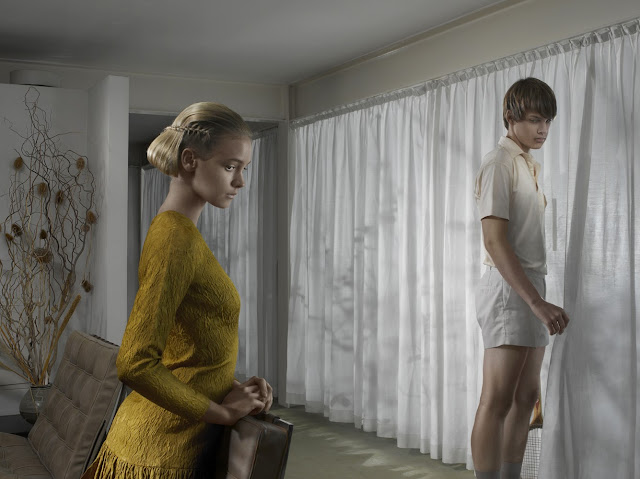MW
What inspired you to start taking photographs, and what have been some of the most important milestones in your career up until now?
JFB
My father is a keen photographer. He started photographing earnestly when we children were born. He took his camera, then an old East German Praktica SLR, with him wherever he went. As well as family photographs he enjoyed street photography. After a shooting session he would disappear into his home darkroom to develop and print B&W film. We would later find the prints floating in the family bath for us to examine. I can claim to have grown up with washed off fixing solution and photography in my veins!
I had to make a career choice when I was sixteen. My parents were amazed when I told them that I was aiming to become a photographer. The die was set and milestone after milestone came and helped to build up my career. Frankly there are too many important milestones to list; I’ll choose a few just to illuminate that my passion for photography, hard work and perseverance were a constant reason why I also, to a certain extent, created the luck that seems to have accompanied me over the years.
The first and significant milestone was, without a doubt, the career path for me, to decide to go to college to study the basics of photography and then follow this up with five years ‘apprenticeship’ assisting many professional photographers. During those five hard but rewarding years I developed many skills.
My efforts to enter and do well in photographic competitions and develop a strong portfolio and keep it constantly up-to-date led to me getting a German agent and, from them, my very first large commercial contract. I became a fully fledged professional photographer.
After a couple of years of commercial engagements I began to exercise my passion for shooting non-commercial, personal work. Through this I got from the National Portrait Gallery in London a prestigious commission to photograph portraits of sixteen very important people in the UK’s National Health Service. These were hung prominently for several months in the NPG, helping to establish my growing reputation further.
At the same time as my portraits were exhibited in the NPG I had my first solo exhibitions of my project ‘Teenage Stories’ in galleries in London, followed by my images being exhibited around the world. I also continued to win prizes for both my commercial and fine-art work, as well as for my website. I was also profiled in many national and international photographic magazines, both amateur and professional.
MW
How do you approach editing your work, and what advice would you give to others about evaluating their photographs?
JFB
After shooting a project, I find I need to distance myself from it. So I put it aside for a few days, or weeks, and keep coming back to it. I welcome opinions from other people, who may or may not be photographers.
MW
How do you decide on new projects to work on? Do you always shoot with a concept in mind or do you wait to be inspired as you go?
JFB
I always have a concept in mind; on the day of the shoot I have everything prepared and planned. Obviously if something goes awry, I am flexible enough to adapt to the circumstance.
New project ideas occur to me constantly, some never see the light of day, others are put onto the back-burner so that I can concentrate on the specific one that I have chosen. Once my mind is made up for a particular project and I have budgeted the project, the gradual process leading up to the shoot commences. This frequently taking several months before the actual shoot. The shoot itself can take just a couple of days, but also be fairly extended, depending on the project.
The planning phase involves hardening up my ideas on scenes, choices of location, models, clothing, props, etc. The day or days of the shoot also require considerable preparation – selecting my team, hiring additional lights or equipment that may be needed, arranging the logistics of getting my team and the models to the location and for accommodation (if needed).
I plan meticulously all details of the project and the shoot itself. Post-production work, including editing (if needed), releasing the images to my agents, the public, the media, and handling all sort of enquiries is supplemental to the above. However once the project is put to bed, it’s not long before the creative juices start working anew, and the entire cycle begins again.
MW
What ways have you found successful for promoting your work and finding a receptive audience for it?
JFB
Very early in my career, still an assistant, I decided to enter photographic competitions and develop a powerful portfolio. After my first agent found me, I now have agents in many countries, who are not only responsible for drumming up business, both commercial and fine-art, and also for getting my work exhibited. I have already alluded to my success with photographic magazines, which also is a powerful tool for promoting my work. I have also had a book published.
In the meantime, I have continuously expanded my promotional activities with a website, and occasionally by using Facebook.. I frequently change the front-page of my web-site. This avoids the viewer getting bored with seeing the same front-page every visit. I also include information about forthcoming exhibitions of my work anywhere in the world, and have added a blog which gives up-to-date news about awards, details of exhibitions, and anything else of relevance.
Custody Battle, from the series Mothers and Daughters
Yuen, from the series Blind
Anna, from the series Blind
Harajuka, Tokyo, 2013
Shimo, Tokyo, 2013
© copyright all images Julia Fullerton-Batten, all rights reserved
















